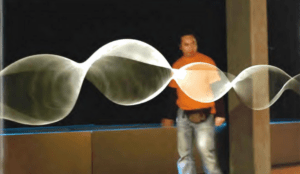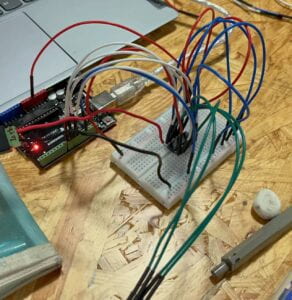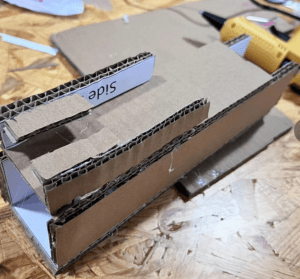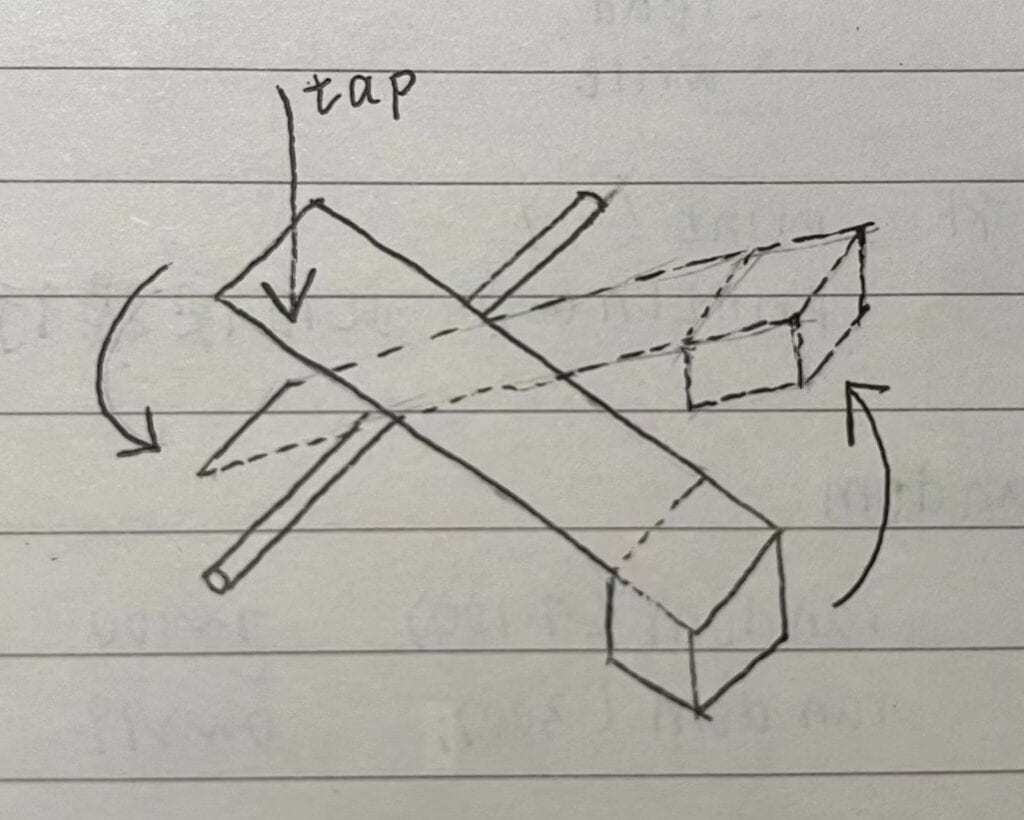My thoughts about the installation:
The installation is using motors to rotate an elastic rope, creating waves and sounds. A picture of it is shown below. This installation transforms one kind of movement into another kind with aesthetic purpose and sound effect. The artist chose actuators that can drive the rope to rotate in various patterns and can create sounds in some way.

(Daniel Palacios Jimenez, Waves, 2006.)
In comparison with what we did in the recitation, I think they are quite similar for they both have motion transformation process. In the recitation, the device can transform the circular motion into linear motion by using side rails and rotate links, creating aesthetic effect at the same time.
Below is a video showing how our device works:
The circular motion is shown as below:
Also, in order to make our design more fun and engaging, I add a dog head in the front, making it look like a dog eating a lollipop.

(the circuit with H bridge)

(the main body of the device)
My midterm mechanism:
I am plannng to use lever principle in my midterm project, the basic sketch is shown as below:

When tapping on the left side(keyboards), the little hollow cube on the right will rise due to lever principle, letting the light sensor under the cube to detect light, thus the circuit can process this information and having outputs accordingly. Also, the user can tap on different keyboards and create different tones. It’s just like a cardboard piano. It is better than playing music on iPads, touching keyboards on the screen. This device allows user to have a more realistic feeling of the music-playing and a more engaging experience of it by actually feeling the keyboards and it is way cheaper than a real piano.
Here’s a list of materials I might use:
- cardboards
- straw
- light sensors
- buzzers
- cables, breadboards…(Arduino kit)
- tool kit